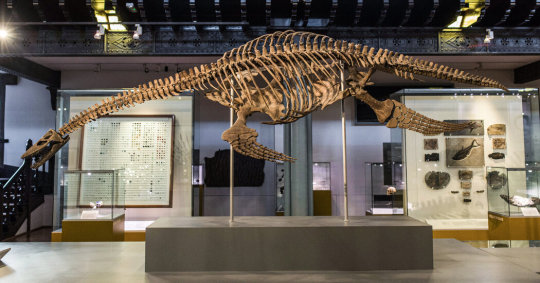#Environment and nature
Video
Willow would emit more climate pollution annually than more than 99.7% of all single point sources in the country. It’s estimated that the oil from Willow, when burned, would add more than 280 million metric tons of climate pollution to the atmosphere over the next 30 years — equivalent to the annual emissions from 76 coal-fired power plants. Willow is a climate disaster we just can’t afford.
https://stopwillow.org/
#tiktok#oil#climate change#climate crisis#collective action#environmental movement#environmental activism#environment and nature#Environment#call to action#willow project#green energy
643 notes
·
View notes
Note
What are your thoughts on how many anarcho-primitivist/luddite/anticiv spaces have been taken over by right-wing types? It seems less people are actually engaging in primitivist thought and more so thinking it's "based" and "trad."
I saw how you got downvoted for insulting whatalthist, and this is what led me to ask this question.
I'm assuming you're referring to online spaces. There's a strong effort by the right to co-opt primitivism. There are some forums that are frequented by right-wingers, though they're in the minority; most problematic spaces are the ones about Kaczynski and things directly related to him. There are also many social media accounts that express primitivistic ideas in combination with authoritarian and rightist politics (e.g. individuals who adore both Ted Kaczynski and Pentti Linkola). Most concerning to me are actually the offline examples that get press coverage.
I see this as being both due to deliberate efforts to co-opt primitivism, much in the manner Nazis co-opted socialism, and due to ignorance on the part of many right-wingers. It isn't too hard to misinterpret Kaczynski's remarks about leftism if you read him inattentively, and conclude that he must be some sort of right-winger. Ted's mistake was focusing on attacking the left too much and worrying too little about the right, but at the time he wrote his manifesto this choice made sense.
Ted was a fan of Earth First! and when he wrote Industrial Society and its Future the wounds of an ideological split within it were still fresh. EF! started out as a truly ecocentric movement with extremely narrow goals of protecting the wilderness from the ravages of industrialism and other harm caused by civilized humans. After gaining a lot of momentum, EF! attracted thousands of newcomers, many of whom leaned more to the side of leftist humanism than deep ecology, causing conflict — the newcomers were trying to transform the movement into one about ecology-related social justice issues, while the original Earth First!ers preferred to only focus on wilderness conservation. (For more on this check out Earth First!: Environmental Apocalypse by Martha F. Lee). The right-wing in America at the time was comprised mostly of people who were staunch prometheans, warmongers, etc., and Ted rightly assumed they weren't going to take over his movement. However as the political climate changed they became one.
The US and the rest of the "West" seems to be experiencing a rise in right-wing back-to-nature ideas, similar in many ways to the so-called "right-wing hippies" of the Weimar republic. I'm talking about doomsday preppers, christian nationalist communes, etc. Kaczynski did not anticipate this, and by the time news about who was adopting (some of) his ideas — not just anarchists and former Earth First!ers, but people including the Greek fascist Golden Dawn party, and Andreas Breivik — reached Kaczynski in his supermax prison it was a bit late. He penned a short note titled Ecofascism: An Aberrant Branch of Leftism in 2020, arguing against their ideas and saying he's their enemy. However, more people read and will read ISAIF in the future than this obscure note and the few other scattered critiques of the right that can be found throughout his work.
What we need to do is to aggressively shun these types until we successfully repel them. This applies to real life and online interactions. There will always be some who'll try to co-opt primitivism, but this big wave needs to be halted. There are also some who are genuinely willing to learn and adjust their beliefs, but they're few in between. It's necessary to distinguish between the two, keep the latter and reject the former.
#anarcho primitivism#anti civ#anarchy#green anarchy#anprim#anticiv#anprimgang#luddism#deep ecology#luddite#theodore kaczynski#ted kaczynski#anti state#modernity#unabomber#environment and nature#environment#earth liberation#earth first!#earth love#primal anarchy#anarcho primitivist#primitivism#ecocentrism#eco anarchism#anti tech
51 notes
·
View notes
Text
Sound reveals giant blue whales dance with the wind to find food
https://sciencespies.com/environment/sound-reveals-giant-blue-whales-dance-with-the-wind-to-find-food/
Sound reveals giant blue whales dance with the wind to find food
A study by MBARI researchers and their collaborators published today in Ecology Letters sheds new light on the movements of mysterious, endangered blue whales. The research team used a directional hydrophone on MBARI’s underwater observatory, integrated with other advanced technologies, to listen for the booming vocalizations of blue whales. They used these sounds to track the movements of blue whales and learned that these ocean giants respond to changes in the wind.
Along California’s Central Coast, spring and summer bring coastal upwelling. From March through July, seasonal winds push the top layer of water out to sea, allowing the cold water below to rise to the surface. The cooler, nutrient-rich water fuels blooms of tiny phytoplankton, jumpstarting the food web in Monterey Bay, from small shrimp-like krill all the way to giant whales. When the winds create an upwelling event, blue whales seek out the plumes of cooler water, where krill are most abundant. When upwelling stops, the whales move offshore into habitat that is transected by shipping lanes.
“This research and its underlying technologies are opening new windows into the complex, and beautiful, ecology of these endangered whales,” said John Ryan, a biological oceanographer at MBARI and lead author of this study. “These findings demonstrate a new resource for managers seeking ways to better protect blue whales and other species.”
The directional hydrophone is a specialized underwater microphone that records sounds and identifies the direction from which they originate. To use this technology to study blue whale movements, researchers needed to confirm that the hydrophone reliably tracked whales. This meant matching the acoustic bearings to a calling whale that was being tracked by GPS. With confidence in the acoustic methods established, the research team examined two years of acoustic tracking of the regional blue whale population.
This study built upon previous research led by MBARI Senior Scientist Kelly Benoit-Bird, which revealed that swarms of forage species — anchovies and krill — reacted to coastal upwelling. This time, researchers combined satellite and mooring data of upwelling conditions and echosounder data on krill aggregations with the acoustic tracks of foraging blue whales logged by the directional hydrophone.
“Previous work by the MBARI team found that when coastal upwelling was strongest, anchovies and krill formed dense swarms within upwelling plumes. Now, we’ve learned that blue whales track these dynamic plumes, where abundant food resources are available,” explained Ryan.
advertisement
Blue whales recognize when the wind is changing their habitat and identify places where upwelling aggregates their essential food — krill. For a massive animal weighing up to 150 tonnes (165 tons), finding these dense aggregations is a matter of survival.
While scientists have long recognized that blue whales seasonally occupy Monterey Bay during the upwelling season, this research has revealed that the whales closely track the upwelling process on a very fine scale of both space (kilometers) and time (days to weeks).
“Tracking many individual wild animals simultaneously is challenging in any ecosystem. This is especially difficult in the open ocean, which is often opaque to us as human observers,” said William Oestreich, previously a graduate student at Stanford University’s Hopkins Marine Station and now a postdoctoral fellow at MBARI. “Integration of technologies to measure these whales’ sounds enabled this important discovery about how groups of predators find food in a dynamic ocean. We’re excited about the future discoveries we can make by eavesdropping on blue whales and other noisy ocean animals.”
Background
Blue whales (Balaenoptera musculus) are the largest animals on Earth, but despite their large size, scientists still have many unanswered questions about their biology and ecology. These gentle giants seasonally gather in the Monterey Bay region to feed on small shrimp-like crustaceans called krill.
advertisement
Blue whales are elusive animals. They can travel large distances underwater very quickly, making them challenging to track. MBARI researchers and collaborators employed a novel technique for tracking blue whales — sound.
MBARI’s MARS (Monterey Accelerated Research System) observatory offers a platform for studying the ocean in new ways. Funded by the National Science Foundation, the cabled observatory provides continuous power and data connectivity to support a variety of instruments for scientific experiments.
In 2015, MBARI researchers installed a hydrophone, or underwater microphone, on the observatory. The trove of acoustic data from the hydrophone has provided important insights into the ocean soundscape, from the migratory and feeding behaviors of blue whales to the impact of noise from human activities.
In 2019, MBARI and the Naval Postgraduate School installed a second hydrophone on the observatory. The directional hydrophone gives the direction from which a sound originated. This information can reveal spatial patterns for sounds underwater, identifying where sounds came from. By tracking the blue whales’ B call — the most powerful and prevalent vocalization among the regional blue whale population — researchers could follow the movements of individual whales as they foraged within the region.
Researchers compared the directional hydrophone’s recordings to data logged by tags that scientists from Stanford University had previously deployed on blue whales. Validating this new acoustic tracking method opens new opportunities for simultaneously logging the movements of multiple whales. It may also enable animal-borne tag research by helping researchers find whales to tag. “The integrated suite of technologies demonstrated in this paper represents a transformative tool kit for interdisciplinary research and mesoscale ecosystem monitoring that can be deployed at scale throughout protected marine habitats. This is a game changer and brings both cetacean biology and biological oceanography to the next level,” said Jeremy Goldbogen, an associate professor at Stanford University’s Hopkins Marine Station and a coauthor of the study.
This new methodology has implications not only for understanding how whales interact with their environment and one another but also for advancing management and conservation.
Despite protections, blue whales remain endangered, primarily from the risk of collisions with ships. This study showed that blue whales in Monterey Bay National Marine Sanctuary regularly occupy habitat transected by shipping lanes. Acoustic tracking of whales may provide real-time information for resource managers to mitigate risk, for example, through vessel speed reduction or rerouting during critical periods. “These kinds of integrated tools could allow us to spatially and temporally monitor, and eventually even predict, ephemeral biological hotspots. This promises to be a watershed advancement in the adaptive management of risks for protected and endangered species,” said Brandon Southall, president and senior scientist for Southall Environmental Associates Inc. and a coauthor of the research study.
Support for this research was provided by the David and Lucile Packard Foundation. The National Science Foundation funded the installation and maintenance of the MARS cabled observatory through awards 0739828 and 1114794. Directional acoustic processing work was supported by the Office of Naval Research, Code 32. Tag work was funded in part by the National Science Foundation (IOS-1656676), the Office of Naval Research (N000141612477), and a Terman Fellowship from Stanford University.
#Environment
#10-2022 Science News#2022 Science News#acts of science#Earth Environment#earth science#Environment and Nature#everyday items#Nature Science#New#News Science Spies#October 2022 Science News#Our Nature#planetary science#production line#sci_evergreen1#Science#Science Channel#science documentary#Science News#Science Spies#Science Spies News#Space Physics & Nature#Space Science#Environment
36 notes
·
View notes
Text
Do you bank with Chase, Wells Fargo, Bank of America, or Citibank?
These banks fund fossil fuels.
But as a customer, you can do something about it.
#climate activism#climate action#climate justice#climate emergency#climate change#fossil fuels#climate disaster#environmental justice#environmentalism#environmental activism#activism#environment and nature#nature#banks#petition
116 notes
·
View notes
Text
The Biden administration’s Willow project would emit more hydrogen dioxide than a third of the coal plants in USA. It is absolute insanity to start more fossil fuel production when the planet is already far beyond its limits. Sign the petition to stop this madness!
#sign the petition#please sign and share#petition#nature#environment and nature#sign and share#climate change#environmental crisis#climate action#environment#i love nature#natureblr#animal rights#urgent#indigenous lives matter#indigenous tumblr#indigenous liberation#climate chaos#climate breakdown#climate bill#climate disaster#activism#activist#future#sustainability#green living#ecosystem#ecology#protection#no planet b
4 notes
·
View notes
Text
Most Idiotic Elder Gen,
WHY TF COULDN'T YOU HAVE LISTENED TO CAPTAIN PLANET!???? 😭😭😭😭😭 I was in shorts and a midi top sweating my thick glorious potato ass off a mere 48 hours ago. Today? You guessed it my spuddies, there's nothing less than SNOW now. We're just a couple weeks out from June at this point upon posting, for context since I realize this is Tumblr. The future WAS ours. Or supposed to be. Thanks for making the planet way less habitable by buying into big oil propaganda.
#tate talks#environmental awareness#environment and nature#environment#cold weather#strange weather we're having#and now the weather#climate change#climate crisis#climate emergency#climate disaster
5 notes
·
View notes
Text

𝔞𝔫𝔦𝔪𝔞𝔱𝔦𝔬𝔫 𝔪𝔞𝔡𝔢 𝔟𝔶 𝔪𝔢; 𝔡𝔬𝔫'𝔱 𝔡𝔢𝔩𝔢𝔱𝔢 𝔪𝔶 𝔠𝔯𝔢𝔡 𝔭𝔩𝔢𝔞𝔰𝔢🥀
@ɢᴠᴊᴇᴍ ᴏɴ ɪɴsᴛᴀɢʀᴀᴍ // ɢᴇᴍssᴛᴜᴅɪᴏsʜᴏᴘ ᴏɴ ᴇᴛsʏ
#dark aesthetic#forest witch#witchy#cottage goth#goth aesthetic#gothcore#forest fire#environmentalism#environment and nature#in honour of Lytton bc and all the other small towns we will lose in the next heat dome#alternative girl
6 notes
·
View notes
Text
Hello everyone,
This is a compilation of my past works on 3d environments and I'll create such high quality 3d environments that'll showcase your properties and for your game environments.
You can message me for any questions, I'm here for you
https://www.fiverr.com/s2/d7252ee043
https://www.fiverr.com/s2/d7252ee043
#3d environment#game environment#environment#enviromental#environmetalists#3d art#game art#game artist#enviroment design#environment and nature#environment art#environmental design#environment illustration#3d game environment
3 notes
·
View notes
Text
Pair of Endangered Corpse Flowers Defy Odds to Bloom at Same Time–Now Bearing 700 Seeds https://www.goodnewsnetwork.org/pair-of-endangered-corpse-flowers-defy-odds-to-bloom-at-same-time-now-bearing-700-seeds/
34K notes
·
View notes
Text








A world full of colors
Full color wheel challenge, what a fun challenge <3
#draw#drawing#artwork#digital art#digitalpainting#digital drawing#art#color#colorful#colors#color wheel challenge#color wheel trend#color wheel challenge but with landscapes!#art challenge#scenery art#scenery#landscape art#landscape#nature and landscape#environment art#br artist#br art#brazilian artist#artists on tumblr#art on tumblr#illustration
45K notes
·
View notes
Text
For April 8 eclipse, totality will draw some upstate while others will stay on LI for a partial experience
When the moon passes between the sun and the earth on April 8, many Long Islanders will be watching, some from schools and parks across the region, where the eclipse will be partial. Others will view it from hundreds of miles away on the “path of totality,” a narrow swath of the United States stretching from Texas to Maine, where the sky will turn dark.
“I can’t explain how weird it is, and how…
View On WordPress
0 notes
Photo

Under no pretext should arms and munitions be surrendered to those who call themselves “authorities,” or anyone for that matter. The state maintains its power through holding a monopoly on the legitimate use of violence. This is used to protect interests of big business that states need to survive these days; these interests are also predominantly responsible for dragging us towards extinction; bowing to or compromising with state/corporate interest is suicidal. Disarming oneself can only mean surrender and defeat.
#green anarchy#green anarchism#ecology#deep ecology#eco anarchism#Environment#protect environment#environment and nature#save the planet#the lorax#lorax#anticiv#Anti Civ#anti state#Anarchist#anarchy#anti colonialism#stop deforestation#deforestation#earth first!#earth first#earth liberation#anarchism#anarcho primitivism#tree#trees#anprim#anprimgang#green politics
70 notes
·
View notes
Text
Fossil Find Tantalizes Loch Ness Monster Fans
https://sciencespies.com/news/fossil-find-tantalizes-loch-ness-monster-fans/
Fossil Find Tantalizes Loch Ness Monster Fans

Plesiosaurs went extinct 66 million years ago, but evidence that the long-necked reptiles lived in freshwater, not just oceans, has offered hope to Nessie enthusiasts.
LONDON — Millions of years before the first (alleged) sighting of the Loch Ness monster, populations of giant reptiles swam through Jurassic seas in areas that are now Britain. Known as plesiosaurs, these long-necked creatures were thought to have dwelled exclusively in oceans.
But a discovery published in a paper last week by researchers in Britain and Morocco added weight to a hypothesis that some Loch Ness monster enthusiasts have long clung to: that plesiosaurs lived not just in seas, but in freshwater, too. That could mean, they reasoned excitedly, that Nessie, who is sometimes described as looking a lot like a plesiosaur, really could live in Loch Ness, a freshwater lake.
Local papers have celebrated the finding. It “gives further credit to the idea that Nessie may have been able to survive and even thrive in Loch Ness,” said an article on page 32 of the Inverness Courrier, a biweekly newspaper in the Scottish Highlands. “Loch Ness Monster bombshell,” blared a headline from Britain’s Daily Express tabloid. “Existence of Loch Ness Monster is ‘plausible’” read headlines in The Scotsman, The Telegraph and elsewhere, seizing on a phrase in the University of Bath’s announcement of the study’s findings.
This is not the first study to find that plesiosaurs lived in freshwater. “This new study is simply providing additional evidence for certain members of this group living in freshwater,” said Dean Lomax, a paleontologist and visiting scientist at the University of Manchester. “We’ve always known this.”
But Nick Longrich, the lead author of the study, said his team had one of the stronger cases for it because they found fossils of 12 plesiosaurs, proof that it was not just one plesiosaur that wandered into freshwater and then died there.
“The more plesiosaur fossils discovered in freshwater environments, the more this will further build the picture to explain why plesiosaurs might be turning up in freshwater environments around the world,” said Georgina Bunker, a student who was a co-author of the paper.
Dr. Longrich, a paleontologist and evolutionary biologist at the University of Bath, said it was “completely unexpected” to find the fossil of a plesiosaur that had lived in an 100-million-year-old freshwater river system that is now the Sahara.
While on a research trip to Morocco, he was sifting through a box in the back room of a shop when he spotted a “kind of chunky” bone, which turned out to be the arm of a five-foot long baby plesiosaur. Dr. Longrich paid the cashier no more than 200 Moroccan Dirham, or about $20, after bargaining to bring down the price, and brought the fossils back to Britain for further study.
Nick Longrich/University of Bath
“Once we started looking, the plesiosaur started turning up everywhere,” he said. “It reminds you there’s a lot we don’t know.” (The fossils will be returned to museums in Morocco at a later date, he said.)
As the news of the study made headlines last week, some Nessie fans were hopeful. George Edwards, who was for years the skipper of a Loch Ness tourism boat called the Nessie Hunter, said that for him the new study showed how creatures could adapt to survive in new environments — and that the world is full of mysteries. Take the coelacanth, a bony fish that was thought to have become extinct millions of years ago but was found in 1938 by a South African museum curator on a fishing trawler. “Lo and behold, they found them, alive and kicking,” Mr. Edwards said. “Anything is possible.”
Mr. Edwards said he had seen unexplained creatures in Loch Ness plenty of times: “There’s got to be a family of them.” From what he has seen, the creatures have a big arched back, no fins and are somewhat reminiscent of a plesiosaur.
But there is one detail that some Nessie lovers may have overlooked in their embrace of the plausibility of Nessie’s existence: Plesiosaurs became extinct at the same time as dinosaurs did, some 66 million of years ago. Loch Ness was only formed about 10,000 years ago, and before that it was ice.
Valentin Fischer, an associate professor of paleontology at the University of Liège in Belgium, said that it would currently be impossible for a marine reptile like the plesiosaur to live in Loch Ness.
Nick Longrich/University of Bath
The first recorded sighting of Nessie dates back to the sixth century A.D., when the Irish monk St. Columba was said to have driven a creature into the water. But global interest was revived in the 20th century, after a British surgeon, Col. Robert Wilson, took what became the most famous photo of the Loch Ness monster in 1934. Sixty years later, the photograph was revealed to be a hoax.
But some people were not discouraged, and, ever since, throngs of tourists have traveled to Loch Ness each year in hopes of seeing the monster.
There have been more than 1,100 sightings at Loch Ness, including four this year, according to the register of official sightings.
A famous photograph of the Loch Ness Monster taken in 1934 was later revealed to have been a hoax.Keystone/Getty Images
Steve Feltham, a full-time monster hunter who has lived on the shores of Loch Ness for three decades, said the British-Moroccan study was interesting, but that it was irrelevant to his search. Ever since it became clear that the famous 1934 photo of Nessie was fake, he has stopped believing that Nessie was a plesiosaur. Plesiosaurs have to come up for air, so he figures he would have seen it during the 12 hours a day that he scans the loch. Instead, he scans the water for giant fish that look like a boat turned upside down.
“I struggle to think of any bona fide Nessie hunter that still believes in the plesiosaur,” he said. “The hunt has moved on from that.”
#News
#2022 Science News#8-2022 Science News#acts of science#August 2022 Science News#Earth Environment#earth science#Environment and Nature#everyday items#Nature Science#New#News Science Spies#Our Nature#planetary science#production line#sci_evergreen1#Science#Science Channel#science documentary#Science News#Science Spies#Science Spies News#Space Physics & Nature#Space Science#News
38 notes
·
View notes
Text


Noticed something a little funky in the world around you and want to figure out what's up? Especially if there might be something you ought to be doing about it? Not sure what information sources to trust these days? If you're in the US, federal agencies like NOAA, USGS, EPA and more collect massive amounts of scientific data every day, much of which is publicly available online - if you know where to look.
A PDF version with clickable links is available for free on my itchio page (quakeandquiver); I'll add a direct link in a reblog.
#wildfires#earthquakes#volcanoes#flooding#natural hazards#disasters#sketchpad#risk comm#environment#disaster preparedness
24K notes
·
View notes
Text
The cosmetics mega-brand Dove campaigns about how much they ”care about women and girls” while at the same time polluting this planet with massive amounts of single-use plastic. Click the link below and sign a letter to tell Dove it’s time to actually start caring for the wellbeing of their customers!
#sign the petition#please sign and share#petition#environment and nature#sign and share#climate change#environmental crisis#climate action#environment#pollution#polluted water#no plastic#plastic waste#plastic#nature#cosmetics#makeup#hypocrite#greenpeace#climate activism#take action#activist#capitalism#trash#garbage#recycle#recycling#animal rights#cosmetology#help
4 notes
·
View notes
Text
If you aren't following the news here in the Pacific Northwest, this is a very, very big deal. Our native salmon numbers have been plummeting over the past century and change. First it was due to overfishing by commercial canneries, then the dams went in and slowed the rivers down and blocked the salmons' migratory paths. More recently climate change is warming the water even more than the slower river flows have, and salmon can easily die of overheating in temperatures we would consider comfortable.
Removing the dams will allow the Klamath River and its tributaries to return to their natural states, making them more hospitable to salmon and other native wildlife (the reservoirs created by the dams were full of non-native fish stocked there over the years.) Not only will this help the salmon thrive, but it makes the entire ecosystem in the region more resilient. The nutrients that salmon bring back from their years in the ocean, stored within their flesh and bones, works its way through the surrounding forest and can be traced in plants several miles from the river.
This is also a victory for the Yurok, Karuk, and other indigenous people who have relied on the Klamath for many generations. The salmon aren't just a crucial source of food, but also deeply ingrained in indigenous cultures. It's a small step toward righting one of the many wrongs that indigenous people in the Americas have suffered for centuries.
#salmon#dam removal#fish#animals#wildlife#dams#Klamath River#Klamath dams#restoration ecology#indigenous rights#Yurok Tribe#Karuk Tribe#nature#ecology#environment#conservation#PNW#Pacific Northwest
12K notes
·
View notes